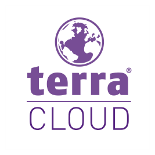Teams-Chat Setup
Teams chat conversations can be backed up with the use of a custom Azure application. Microsoft Teams Chat service uses the Microsoft Graph Teams Export API to retrieve chat messages.
Before you enable the Teams chat backup service, you must register a custom app profile for Microsoft 365 for Auto Discovery and backup, and request access to Microsoft Graph Teams Export API.
To request access to Export APIs, read the prerequisites and complete the request form. Note that Microsoft charges for Teams Chat API usage through your Azure account.
The Export API model B will charge the app creator $0.00075 per message.
1. Create certificate, with export of .cer and .pfx files
- 1.1. In the Azure Portal, navigate to Key vaults.
- 1.2. On the Key vaults page, select a key vault and then select Certificates in the left menu.
- 1.3. In the Certificates panel, click Generate/Import and complete the required fields.
- 1.3.1. Method of Certificate Creation: Generate
- 1.3.2. Certificate Name: CarboniteCustomApp
- 1.3.3. Type of CA: Self-signed
- 1.3.4. Subject: CN=CarboniteCustomApp
- 1.3.5. DNS Names: <0>
- 1.3.6. Validity Period: 60
- 1.3.7. Content Type: PKCS #12
- 1.3.8. Lifetime Action: automatically renew
- 1.3.1. Method of Certificate Creation: Generate
- 1.4. Click Create and wait for the Status of the certificate to become Enabled. You can click Refresh to update the status if needed.
- 1.5. Click the name of the certificate, and then select the current version of the certificate.
- 1.6. Click Download in CER format and Download in PFX/PEM format to download the certificate files to your local machine.
- 1.7. When you have the certificate (.pfx file), you must set a password to protect the certificate.
- 1.7.1. Open Windows PowerShell and paste the following script to Windows PowerShell.
- Replace [Full Path of your pfx certificatefile] with the full path of the certificate (.pfx file) in your local machine.
- $pfxPath=[Full Path of your pfx certificatefile]
- // This command will popup a window, and it will ask you to input a password to protect the certificate.
- $credential=Get-Credential -Message "Enter a password to protect the certificate." -UserName "any"
- $pfxdata=Get-PfxData -FilePath $pfxPath
- Export-PfxCertificate -FilePath $pfxPath -Password $credential.Password -PFXData $pfxdata
- 1.7.2. b. Press Enter to execute the script.
- 1.7.1. Open Windows PowerShell and paste the following script to Windows PowerShell.
- 1.8. After completing the steps above, you will get two certificate files.
- The .cer file can be used to Create Custom Azure Applications in Azure Active Directory, and the .pfx file can be used to Create an App Profile for a Custom Azure App in Carbonite Cloud Admin.
2. Create Custom App in Azure https://support.carbonite.com/endpoint/articles/Create-Custom-Azure-Applications
- 2.1. Teams Chat uses Microsoft Graph API, and requires User.Read.All and Chat.Read.All
3. Register with Microsoft to gain access to Teams Chat API: https://forms.office.com/pages/responsepage.aspx?id=v4j5cvGGr0GRqy180BHbRzunGr4BpIZKrR2pxgnek8xURTVSUllZVFYyVlE4Tkw3UFZXSFZXN0I2WC4u
- 3.1. Enter the name and appID of the custom app created.
4. Once Microsoft confirms access to API, create App Profile for Custom App
- 4.1. Click Create on the App Management page in Carbonite Cloud Admin.
- 4.2. In the pop-up window, choose Custom Azure App.
- 4.2.1. App Profile Name – Enter a name for the profile.
- 4.2.2. Application ID – Enter the application ID of the application that has been created in Azure.
- 4.2.3. Certificate File (.pfx) – Click Browse and select your app’s private certificate (the .pfx file).
- 4.2.4. Certificate Password – Enter the password of the certificate.
- 4.2.5. Connect to Your Microsoft 365 Tenant – Enter the username of a user in your Microsoft 365 tenant. This user will be used to identify your Microsoft 365 tenant ID for creating the app profile
- 4.2.6. Permissions Granted to the App – Select Microsoft 365 and Azure AD. Under M365 choose all permissions.
- 4.2.7. Click OK to create the app profile.
- 4.2.1. App Profile Name – Enter a name for the profile.
- 4.3. The App Management page appears, and the app profile is created successfully.
- 4.4. Create Scan Profile, check Express Mode box for Microsoft 365 User, use app profile created in step 4 to run the scans for Teams Chat
